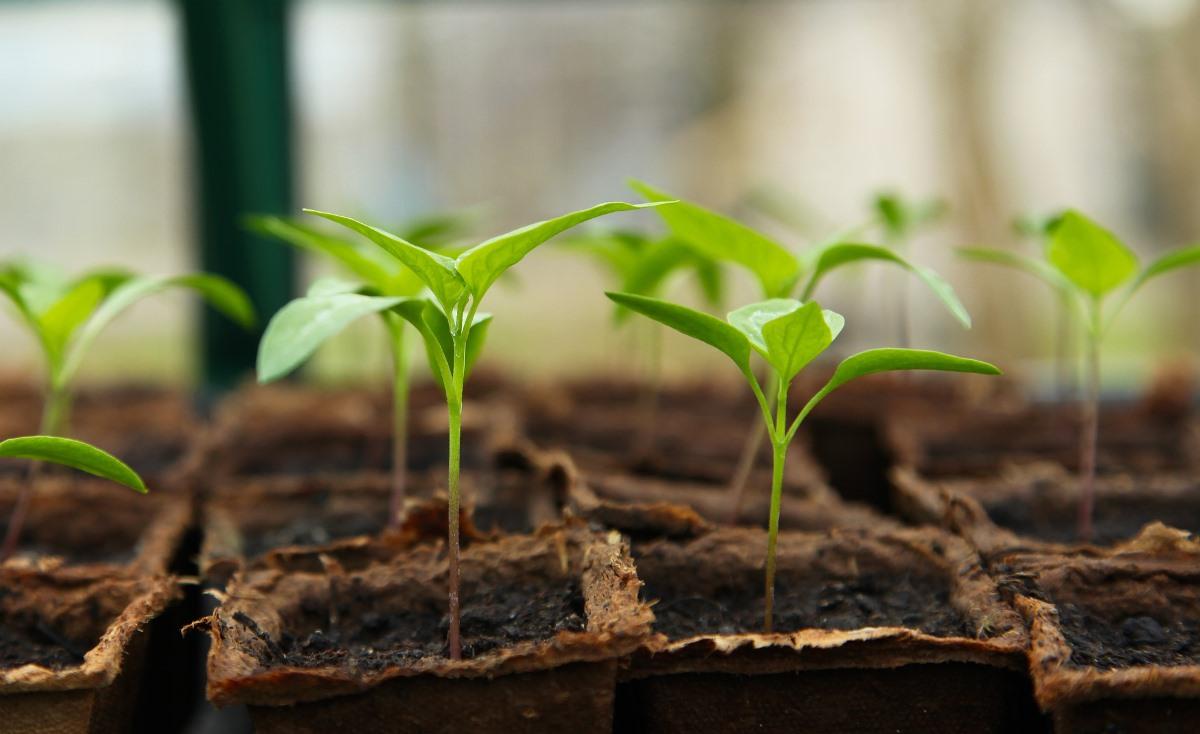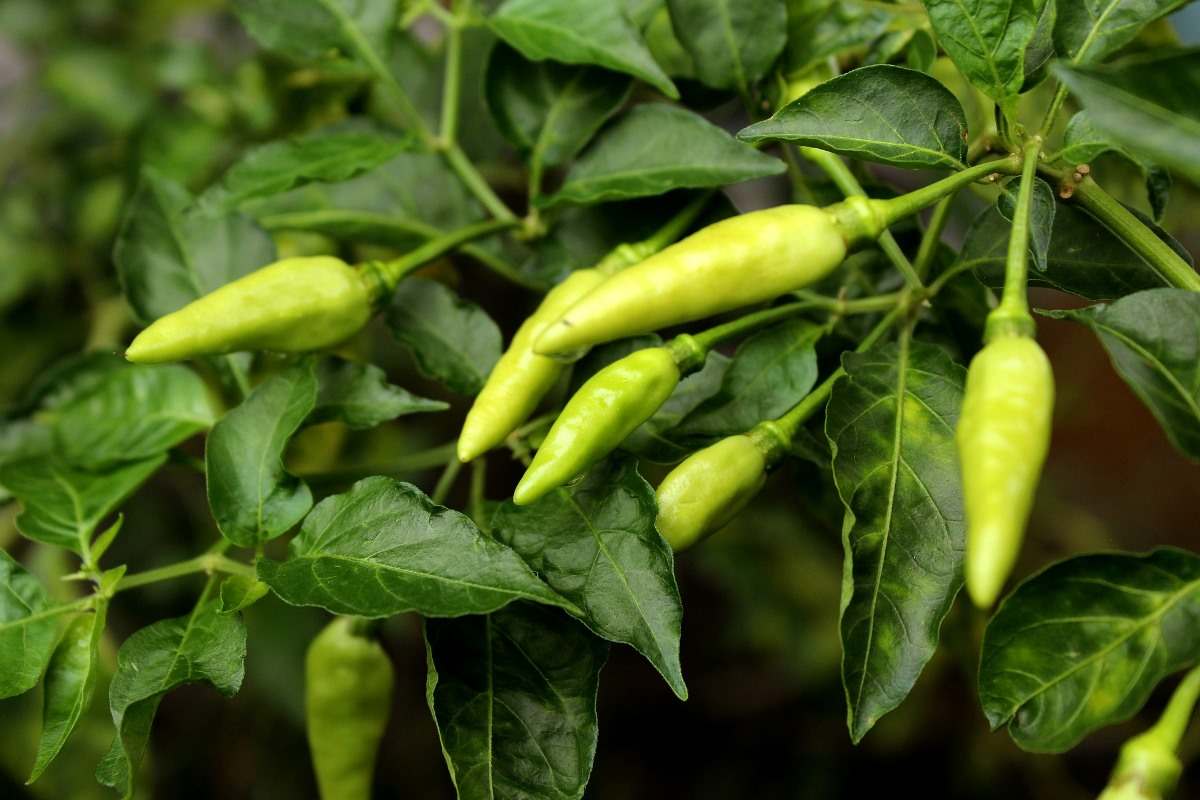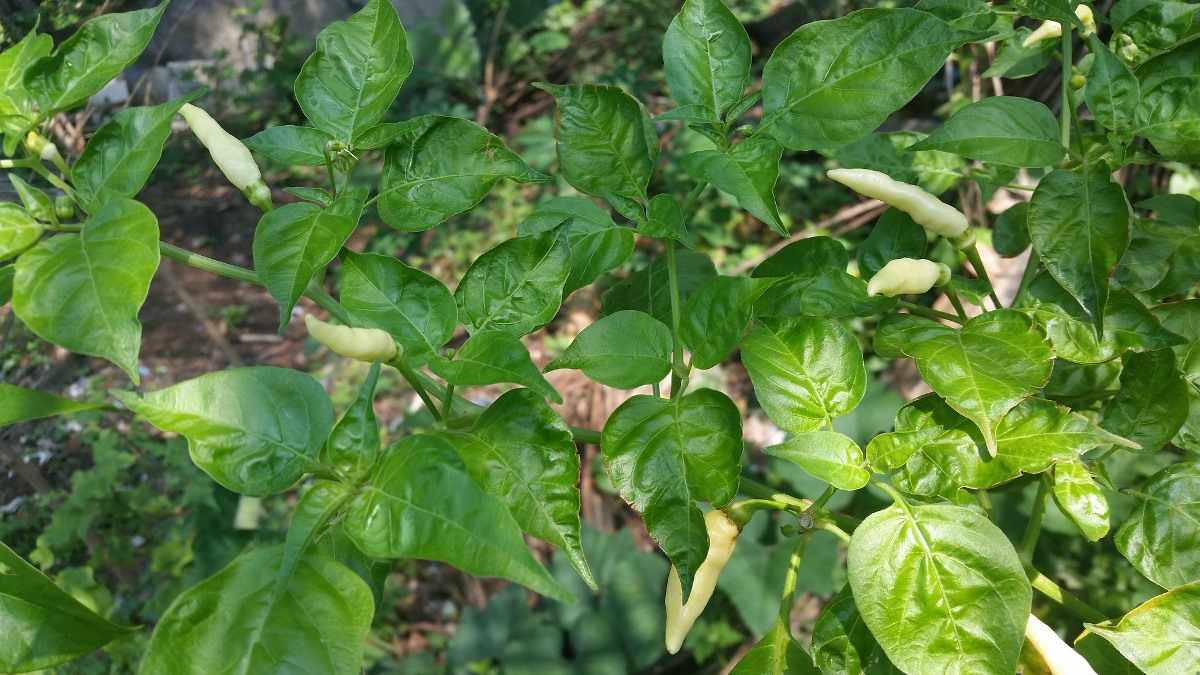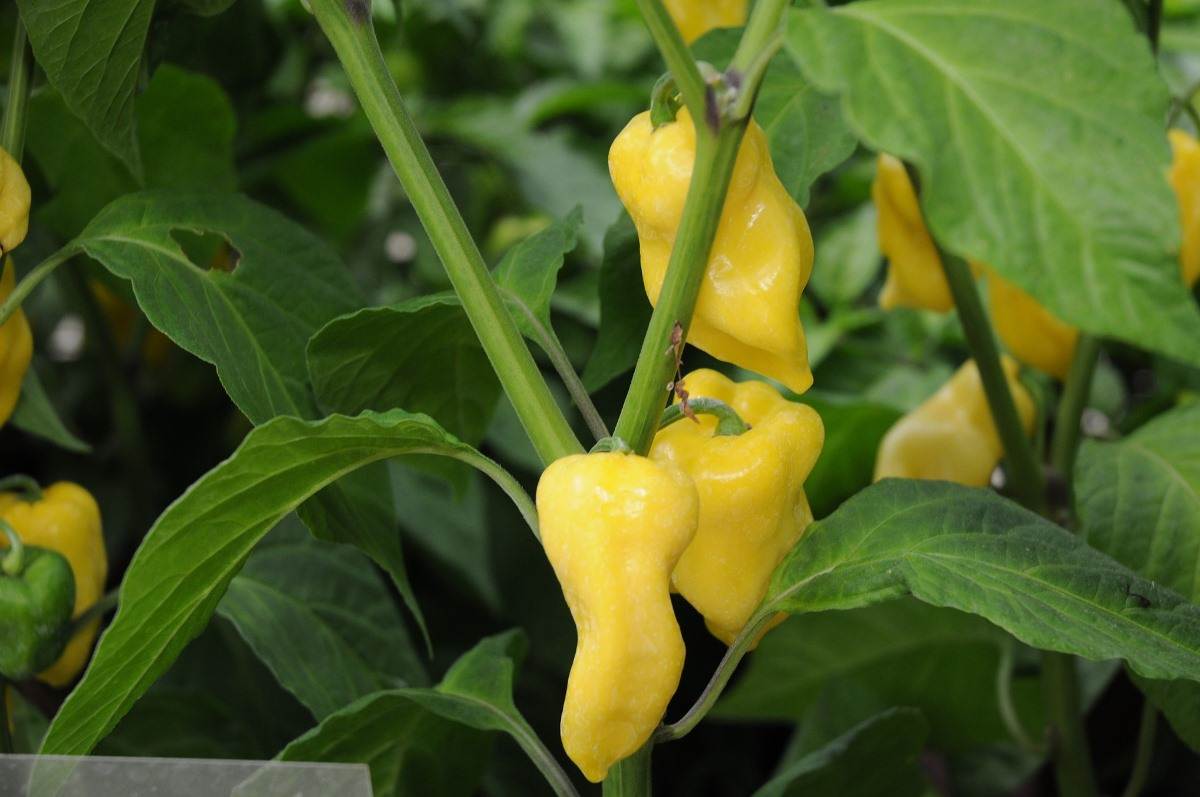Introduction on how to grow Chilli plants at home
Chilli belongs to family Solanaceae and is botanically called as Capsicum annuum. It is a small, yearly shrub with a straight and branched shoot. It also has a tap root system with very simple leaves and the flowers of Chilli are white. In India Chilli is also called Mirchi. Chilli plants like a warm, sunny spot, well-drained soil and regular watering during dry weather. Buy as seedlings or as established plants from nurseries, and the plants are easy to grow from seed. In this article we also discuss below topics;
- Why are my Chilli plant leaves curling
- How long do Chillies take to grow
- How do you grow chilli at home
- Why are my Chilli seedlings dying
- How often should I water my Chilli plant
- Chilli plant care
- Why are my Chilli plants growing so slowly
- Chilli plant growing tips
- Why is my Chilli plant not flowering
- Why are my Chillies so small
A step by step guide on how to grow Chilli plants at home
Chillies are extremely simple to grow at home. Chillies cover a wide range of peppers under the name Capsicum annuum. Chilli plants can grow anywhere but they prefer warm, sunny conditions. Though they can be grown in moisture-retentive soil, well-prepared, they generally crop better and more reliably if grown in containers. you can grow them on sunny windowsills, in a greenhouse, or directly in the ground. They’re perfect for containers and their brightly-coloured fruits are a great way to brighten up conservatories or patios.
Varieties of Chilli plants to grow at home
Chillies range from green, peachy orange, butter yellow, and fire-engine red, to plum and a pitch-black hue. The colour doesn’t have a direct link to the spice or flavour level of each chilli. The good reliable varieties of Chilli are Apache, Cayenne, Demon Red, Etna, Fuego, Habanero, Hungarian Hot Wax, Joe’s Long Cayenne, Prairie Fire, Super Chili, and Thai Hot Dragon. One of the hottest Chillies you can grow at home is Dorset Naga, which is extremely hot. Some other important indoor chilli varieties are Apache, Poinsettia Chili, Mirasol, Prairie Fire, Etna, Habanero Cristina, Macho, and Cayenne.
How to grow Chilli plants at home from seed

Chilli plants are one of the most interesting and easy to grow plants that you can grow virtually anywhere.
Sowing Chilli seeds – You can sow Chilli seeds from February to April. It is better to sow as early as possible, even January if you’re growing hot Chillies, as they need a long summer to crop well.
Sow seeds at 18 to 21°C in pots of good seed sowing compost. Transplant the seedlings individually into 9 to 10cm pots when two true leaves have formed, and grow them on at around 16 to 18°C. Gradually harden off the Chilli plants for 10 to 14 days before planting outside.
Here’s how to grow Chillies from seed;
- Start your seeds off indoors and they need plenty of warmth to germinate.
- Then, fill a seed tray or some 10cm pots with moist seed compost and flatten down.
- Sow a few Chilli seeds on top and cover with a fine sprinkling of vermiculite or compost.
- Place in a propagator at a temperature level of 18-25°C. If you don’t have a propagator, use polythene to cover your seed trays and pop them on a sunny windowsill.
- Germination usually takes 7 to 10 days, after which you can move your seedlings to a warm, sunny windowsill (or heated greenhouse).
- Keep the compost evenly moist but take care not to let it get soaking wet.
How to grow Chilli plants from cuttings at home
Step 1) Select a healthy mother plant from which to take your cuttings. You should choose one with well-formed, green foliage and strong stems for the best chance of success.
Step 2) Fill the growing container about 7 or 8 centimetres deep with a well-drained soil mix, such as an equal blend of peat moss with perlite.
Step 3) Fill a container with 2 to 3 inches of a well-drained rooting medium with low fertility. A suitable rooting medium contains half peat moss and half sand, perlite or vermiculite. The container should have adequate holes to ensure good drainage.
Step 4) Moisten the rooting medium slightly and then poke well-spaced holes in the medium to accommodate the cuttings using a pencil or similar utensil.
Step 5) Cut a 2- to 4-inch section of a stem tip-off of the parent Chilli plant. Each cutting should contain at least two nodes and a small swelling on the stem where the leaves emerge. Make the cut just below a node and disinfect the knife or other tool used to make the cuts between uses to prevent the spread of disease. Snip off the lowest pair of plant leaves on the cutting.
Step 6) Insert the cutting into a prepared hole in the rooting medium so the lowest remaining plant leaves are just above the surface of the medium. Gently firm the medium around the cutting and then mist it in thoroughly so the material settles around the cutting.
Step 7) Cover the container with clear plastic or enclose the container in a clear bag. This helps to maintain high relative humidity around the Chilli plants. Mist the cuttings regularly so the medium is moist but not wet and never allow the rooting medium to dry out completely or the cuttings to wilt.
Step 8) Transplant the Chilli cuttings into larger containers with a well-drained, fertile potting soil once roots an inch long develop.
How to grow Chilli plants in pots/containers of home garden
Chillies grow very well in containers. Chilli plants require a well-drained and airy soil. The seeds will germinate and you’ll see two small leaves on the surface of the soil within 7 to 10 days of planting the seeds. Keep watering them every alternate day and make sure they’re exposed to 4 to 6 hours of sunlight daily.
Select a pot at least 12 inches wide and fill it with a good quality potting mix. Chilli seeds can be sown direct or seedlings can be transplanted into the pot and watered well.
For growing chillies in containers, choose a container that has sufficient drainage holes (You can also use grow bags). A 5-gallon pot is sufficient for a single plant for most of the Chilli varieties. Use a 3-gallon pot for small plant varieties and a little larger 7 or 10-gallon pot for growing a large variety or if you live in a warm climate as Chillies are a perennial plant there.
How to grow Chilli plants organically in the home garden

Here, simple steps for growing Chillies organically in pots;
Chilli is propagated by seeds. For raising nurseries, seeds of high yielding varieties with tolerance to pests and diseases can be used. They must be carefully selected from certified organic farms or from their seed plot which is raised organically. Seeds must not be treated with any chemical fungicides or pesticides.
The soil can be treated with Azatobacter or Azospirillum by 1-1.25 kg mixed with 50 kg of FYM and broadcasted in the field. Farm Yard manure by 4-6 tonnes and 1-2 tonnes of vermicompost can be added per acre. Though seeds can be sown by the broadcast method in the main field, the transplanting method is preferred for better quality and survival.
The nursery bed is raised from ground level and is prepared by thorough mixing with compost and sand. Chilli seeds treated with Trichoderma are sown and covered thinly using sand. The seeds germinate in 5 to 7 days and ready 40-45 days old seedlings for transplanting.
Organic manure such as farmyard manure is applied by 4-6 tonnes/acre. However, it is always advisable to use compost or farmyard manure from their farm rather than from outside the farm.
Liquid fertilizer should never be applied to dry roots and the nutrient salts would immediately destroy the roots. Regular applications of a suitable organic or seaweed-based liquid product will help keep soil active and the Chilli plant flourishing. Ensure you remove the fruit of the Chilli plant as it starts to ripen and regular picking can stimulate a second flush of flowering and fruiting.
How to grow Chilli plants in the backyard of the home
Growing Chillies in the backyard is easy. Select a plot in your garden that gets full sun or at least mostly sun for the majority of the day. Space your Chilli plants 20 inches apart in the ground.
You may also like this: Growing Kale Organically At Home.

Soil preparation is very important when growing Chillies. You can mix the soil of your garden with compost and river sand. Your soil pH level may need correction. The optimum pH is between 6 and 6.8. Also, many backyard growers put chopped eggshells inside the planting hole, to provide adequate calcium levels to the Chilli plant.
In a backyard, the average Chilli plant growing in an average soil will be benefited from the addition of compost. Composting is an environmentally friendly process with good results in plant nutrition in the backyard, offering significant savings as well. It is a process through which organic residues such as plant leaves, thin branches, peels and other food residues (eg. eggshells) are transformed through various processes and with the help of soil microorganisms into a nutrient-rich substance called compost.
How to grow Chilli plants in the balcony of home garden
- Chillies can be grown wonderfully on the balcony and they look decorative and their exotic fruits can be used fresh in the kitchen. In many gardens, chilli plants are the gardener’s favourites.
- Balconies facing south are ideal so that Chillies get direct midday sun. Chilli plants must be exposed to sunlight for at least 5 hours. You may need to let the fruit ripen indoors under plant light in autumn. Then plant your ornamental chillies in flower pots and this makes it easier for you to change location. They grow well in clay, plastic or terracotta containers with a good draining system. Plant dry Chilli seeds about 2-3 centimetres into the loamy soil and keep the pot in a dry and humid area. Almost any vegetable plant you can think of to grow in a backyard garden will also thrive in your balcony vegetable garden under the right conditions and the best example is Chillies.
- Balcony vegetable gardening will yield a great number of vegetables so long as plants get plenty of moisture and sunlight. Be sure to harvest vegetables when they are at their peak of ripeness. This will give you the best-tasting vegetables from balcony vegetable garden. If you keep the pot in a sunny spot and provide right soil and fertilizer at the time, this vegetable plant will fruit prolifically. The Large and deep pot that is minimum about 12 inches deep is optimum.
How to grow Chilli plants on the terrace of the home
For growing Chillies on the terrace, select large and deep pots, avoid thin and poor quality plastic pots because they heat up quickly and drain poorly. Using normal garden soil is a bad idea for growing Chillies in pots. Instead, use a good quality potting mix for the healthy growth of Chilli plants and productivity.
Get ready to get dirty, and simply start planting the Chilli seeds in the pot with the right kind of soil and it is the best part of making your terrace vegetable garden. Terrace gardens have space constraints and if they do not have a proper drainage system, the growth of vegetables might be affected. You need to check of shaded and sunny areas and design the layout accordingly.
The raised bed on the terrace does not differ fundamentally from those you see in a regular garden. Chilli love hot weather so grows in a greenhouse or even in a pot on the kitchen window sill for a bit of extra heat to your Chilli plants.
How to grow Chilli plants indoors at home
- Homegrown Chilli peppers have excellent colour, texture and flavour, including many shapes and colours not readily obtainable in shops. Plants are extremely varied; some have a mild flavour, while others are fiery that they’ll blow your head off. Chilli plants can be grown in the ground, but are perfect for raising in pots. Chilli plants like heat, and you can grow them successfully both indoors and outdoors.
- Temperature is a consideration and many chilli pepper plants prefer the warmer climes, but some species grow best in more moderate temperatures. Light is always a factor and places your plants near brightly lit windows that receive many hours of sunlight.
- Be sure to water properly when growing chillies indoors. Water when the soil is slightly dry, but do not overwater as you may rot the plant roots, therefore killing the chilli plants. Water until the soil is slightly moist.
- During average summer weather conditions they will need watering 2 to 3 times a week, (although this may vary from area to area depending on soil type, wind exposure and rainfall) paying particular attention to the watering regime during flowering through to fruit set.
Chilli growing problems and solutions
In case if you miss this: Growing Organic Spinach At Home.

Flower Drop
Overwatering is the common cause of all Chilli growing problems and can cause flower drop. Underwatering can also cause Chilli flower drop. Overfeeding or the wrong feed can cause plants to drop Chilli flowers. Once C plants start to flower, switch feeds to a high potassium feed like a half-strength tomato feed.
Symptoms – Dropped flowers before Chilli pods formed.
Cause – Overwatering, overfeeding, lack of pollination, unstable temperature control.
Prevention or Cure – Attract bees or give flowers a gentle shake or brush from Chilli flower to flower. Adjust watering, ensure soil is moist but not wet and check dose rate on your feed. Ventilate during the day and give insulation at night.
Leaf Burn
Symptoms – Pale brown or white patches in splash formations or concentrated around leaf edges. Commonly on lower leaves and affected leaves become thin and papery.
Prevention or Cure – Water early in the morning or evening time. Water slowly to avoid splashing leaves.
Chillies not growing well
Chillies are not growing well because of the three main causes. They are;
Temperature – Chilli plants will grow slowly or not at all in cold conditions.
Watering – too much water or compost that is too airless will retard growth.
Pests – Aphids and other pests can be a problem. Inspect plants regularly and remove any pests.
Poor Compost – Chilli plants like a free-draining, rich compost with a pH level of 6 to 6.5.
Over or under feeding – Carefully follow the manufacturer’s directions for dilution and frequency of feeding.
Overwatering can cause pepper leaves to curl due to the plant roots’ inability to access enough oxygen and nutrition from the soil. Overwatering will usually cause yellowing leaves and stunted plant growth. The solution is water only when the soil has become mostly dry.
Growing Chillies in Greenhouse
Growing Chillies in a Greenhouse is an effective method of producing bigger and earlier crops. Chillies need to be planted early in the season, as they are slow-growing and also require plenty of light and warmth, so growing under glass real glass (not plastic) will boost the temperatures.
Process of Growing Chillies in the greenhouse;
Growing Chillies in a greenhouse in pots does allow the plants to be moved more easily, but they will need more feeding if they are container grown. Once transplanted they need plenty of light and warmth ideally a heater must be used to maintain a minimum temperature of about 12°C if the temperature drops too far at night, the plants will take a while to recover the next day. Chillies require an optimum temperature level of 18 to 22°C for germination. They also need plenty of bright light. If you have a heated greenhouse or one of our brilliant heated propagators, seeds can be sown as early as February but for unheated greenhouses, sowing seed is best left to late March or early April.
1) Sow Chilli seeds thinly in trays of moist seed compost and place in your greenhouse.
2) Take care not to over-water as the compost want to be moist but not soggy.
3) Once the Chilli seeds have germinated and grown two true leaves, pot on into 75mm pots or Rockwool cubes and grow on in a warm and light space.
4) Once the plants have established a healthy root system, at about 25-35cm high, plant out into final position.
Growing Chillies in Hydroponics (without soil)
Hydroponics is a method of growing plants using purely liquid nutrient solutions in the place of soil. The method is one that is suited well to growing Chillies and the main benefit is that it produces very rapid growth rates in plants.
Rockwool is one of the popular mediums used amongst Chilli growers. The main benefits are that is can hold large quantities of water and air at the same time while providing the plants stable and supporting the plant roots. By using techniques like hydroponics your chilli plants will grow quickly due to the easy availability of requisite nutrients producing greater and higher quality yields.
Hydroponic chillies need warm temperatures, 22 to 26°C during the day and 18 to 21°C at night, for optimum growth. You can use 30 watts of high-intensity discharge (HID) lights for every square foot of growing space, which provides the right spectrum for plant growth. Then, decrease the water supply during fruiting to increase the heat of the chillies.
Common pests and diseases for Chillies
Aphids are the biggest enemy of Chilli plants, so keep an eye on them. Also, in dry and hot weather spider can affect the Chilli plant. Other pests to look at are cutworms, hornworms and flea beetles. Common diseases are rot, mildew and bacterial spot.
Aphids – Look for colonies of greenfly on the soft shoot tips of plants. Then, they suck sap and excrete sticky honeydew, encouraging the growth of black sooty moulds.
Remedy – Use finger and thumb to squash aphid colonies or use biological control in the greenhouse.
Whitefly – Small white flies suck sap and excrete sticky ‘honeydew’ over the Chilli plant, encouraging the growth of sooty mould.
Remedy – Use biological control or sticky traps in the greenhouse system. Ideally in the greenhouse but if you don’t have power to the greenhouse, start them indoors on a sunny and south-facing window sill.
Grey mould – A usually grey, fuzzy fungal growth which can begin as pale and discoloured patches. Grey mould is a common disease, especially in damp or humid conditions. Spores enter plants by damaged tissue, wounds or open flowers. Mould can also damage ripening fruit such as strawberries. Black resting spores survive over winter.
Remedy – Remove damaged parts before they can become infected. Then, cut out infected areas into healthy tissue and clear up infected debris. In greenhouses, reduce humidity by ventilating and avoid overcrowding of young plants and seedlings.
Anthracnose – This disease pathogen is spread by splashes of rain that get on the plants during warm weather.
Remedy – To avoid damage, you can grow fungus-resistant varieties or treat your plants with neem oil.
Pruning your Chilli/Pepper plants
At the start of the growing season or with newly planted Chilli plants, lightly tip prune new growth to encourage bushiness. This is more important if your Chilli plants are in a shady spot. In autumn, after the last fruit of the season has been picked and the plant is dropping plant leaves, you can prune the plant back quite hard. Then, trim back spindly and leggy branches, leaving a nice open framework with an even branching pattern.
Harvesting Chillies/Peppers
Pick the Chillies as needed when it has reached a good size. You can pick them when they’re green or leave them on the plants until they have turned red, which develops a stronger, hotter flavor.
After chilli blossoms have been fertilized, it takes about 3 months until the harvest. You will first notice a subtle change in colour. After a long wait, it goes quite fast and the ripening time depends on the climate. Many chilli plants that are suitable for the balcony need approximately 80 days from flowering to ripening.
In case if you are interested in this:Gardening Greens for Chickens and Goats.